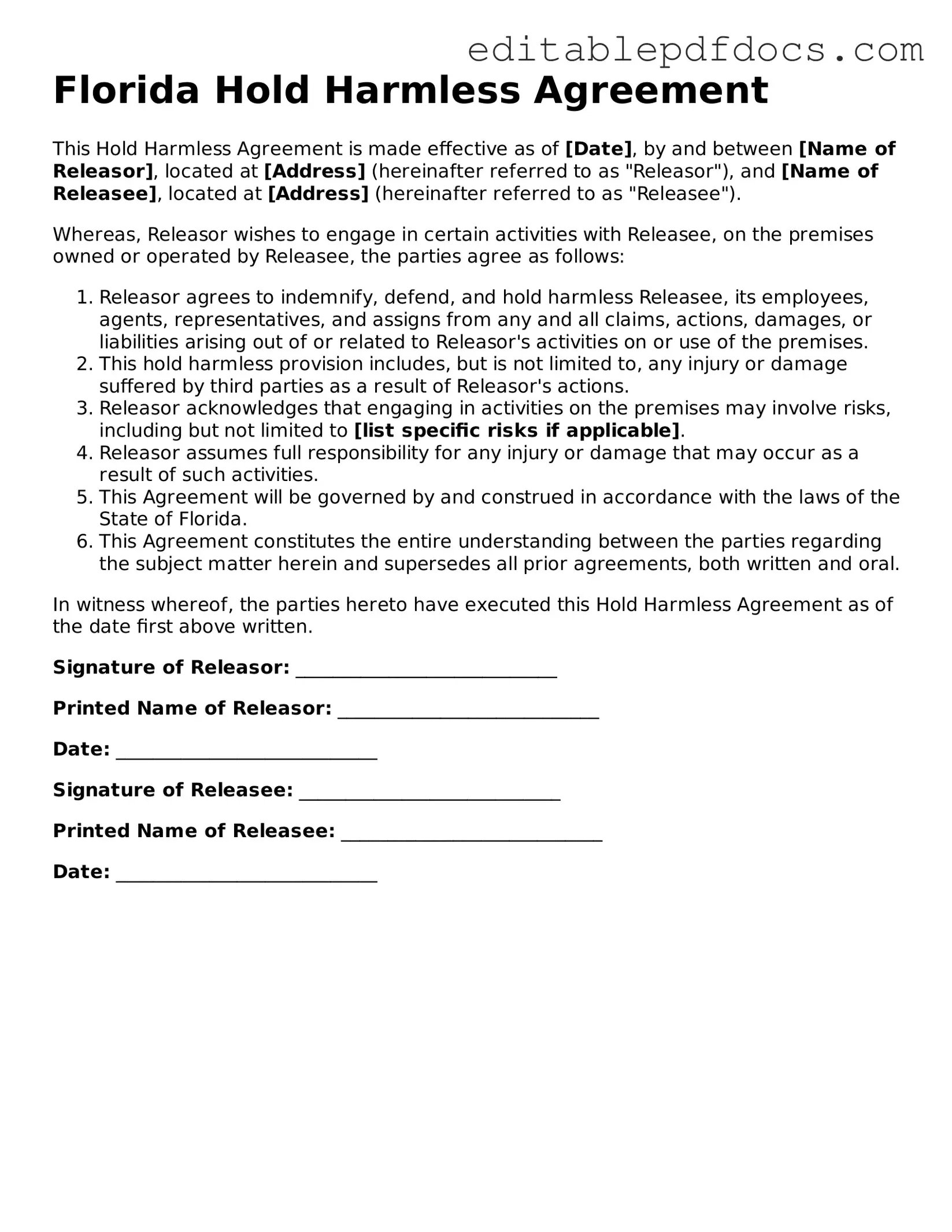Filling out a Florida Hold Harmless Agreement can be a straightforward process, but mistakes can lead to complications. One common error is failing to provide complete information. Individuals often overlook essential details such as names, addresses, or dates. Incomplete information can render the agreement invalid or unenforceable.
Another frequent mistake is not clearly defining the scope of the agreement. It is crucial to specify what activities or events the agreement covers. Without clear definitions, parties may have differing interpretations, leading to potential disputes in the future.
People sometimes neglect to include all relevant parties in the agreement. Omitting a party can create legal vulnerabilities. All individuals or entities that could be affected by the agreement should be listed to ensure comprehensive protection.
Additionally, individuals may fail to read the entire document before signing. Rushing through the process can result in misunderstandings about the terms and conditions. It is essential to understand what rights are being waived and what obligations are being assumed.
Another mistake involves not consulting with legal counsel. While the form may seem simple, having a professional review it can prevent misinterpretations or errors. Legal advice can provide clarity on the implications of the agreement.
People often forget to date the agreement. A missing date can lead to questions about when the agreement takes effect. Including a date is crucial for establishing the timeline of the agreement’s enforceability.
Some individuals may mistakenly assume that a verbal agreement suffices. However, a Hold Harmless Agreement should always be documented in writing. Relying on verbal agreements can lead to misunderstandings and disputes that are difficult to resolve.
Finally, individuals may not keep a copy of the signed agreement. It is essential to retain a copy for personal records. Having documentation can be invaluable if disputes arise in the future.
